The Ho Chi Minh City Museum of Fine Arts, a hidden gem nestled in bustling Saigon, has long been an unmissable cultural destination for tourists and locals alike. This place is not only an art exhibition space but also a unique architectural work, imbued with the city’s history and culture. Let’s explore this special museum with “Du lịch khắp thế gian,” where the beauty of classical French architecture and the rich treasure of Vietnamese art intersect.
1. Discover the Overview Beauty of the Ho Chi Minh City Museum of Fine Arts
The Ho Chi Minh City Museum of Fine Arts is located at 97A Pho Duc Chinh Street, Nguyen Thai Binh Ward, District 1, a prime central location, easily accessible from many areas in the city.
Essential information before visiting the Museum of Fine Arts:
- Address: 97A Pho Duc Chinh Street, Nguyen Thai Binh Ward, District 1, Ho Chi Minh City.
- Opening hours: 8:00 AM – 5:00 PM daily.
- Entrance fees:
- Adults: VND 30,000/person.
- Children (6-16 years old), students, seniors, people with disabilities: VND 15,000/person.
- Children under 6 years old: Free.
The Ho Chi Minh City Museum of Fine Arts officially opened its doors to visitors in 1991, after a meticulous construction and preparation process. To date, it has become one of the leading art museums in Vietnam, attracting a large number of domestic and international tourists to visit and learn about culture and art. With its central location, visitors can easily combine a visit to the museum with other famous Saigon tourist attractions such as Ben Thanh Market, Notre Dame Cathedral, Independence Palace, Nguyen Hue Pedestrian Street, creating a complete and memorable Saigon discovery journey.
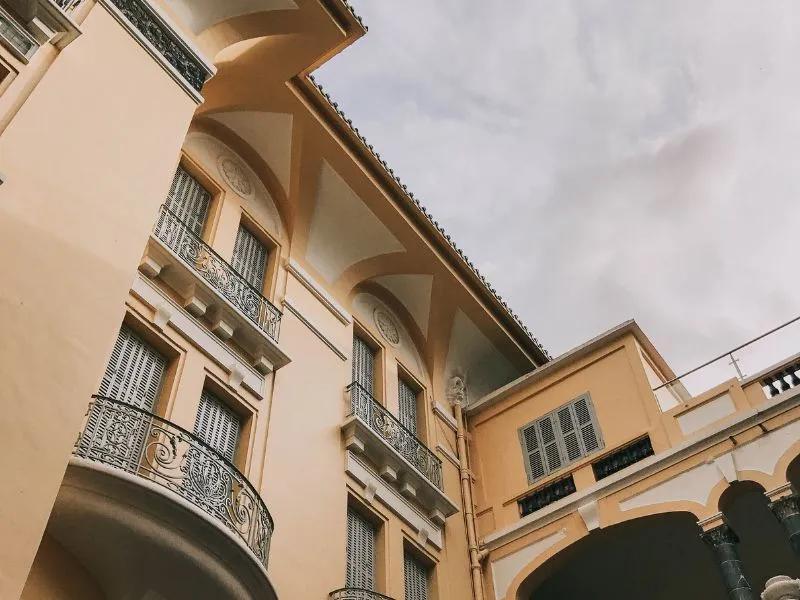
2. Unique Baroque Architecture – An Artistic Highlight in the Heart of the City
From the first glance, visitors will be overwhelmed by the magnificent architectural beauty of the museum. The building is imbued with the Baroque style, a famous architectural school of France in the early 20th century. The harmonious combination of Eastern and Western architecture creates an appearance that is both majestic and ancient, yet sophisticated and unique.
Bright yellow is chosen as the main color tone, combined with bright red tile roofs and elaborate blue-glazed ceramic trim, all harmonizing to create an impressive and prominent architectural ensemble in the modern urban space.
Stepping inside the museum, visitors will continue to be captivated by the meticulously and delicately designed interior space. European-style patterned glass windows are symmetrically arranged, welcoming natural light to flood the space, creating a sense of airiness and relaxation.
The floor is tiled with patterned tiles with diverse motifs, while the staircase is clad in luxurious marble, creating accents and enhancing the beauty and attractiveness of the space. The unique spiral staircase at the museum has become one of the most favorite photo spots for visitors when they come here.
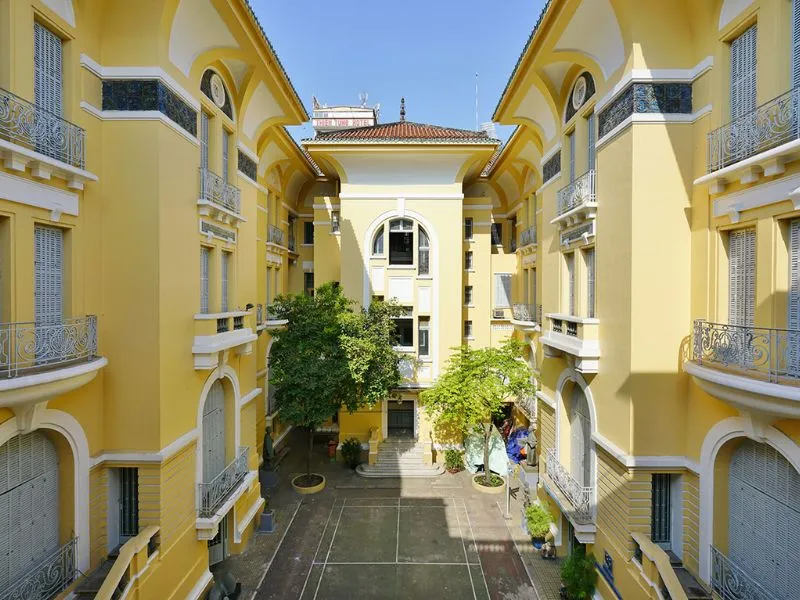
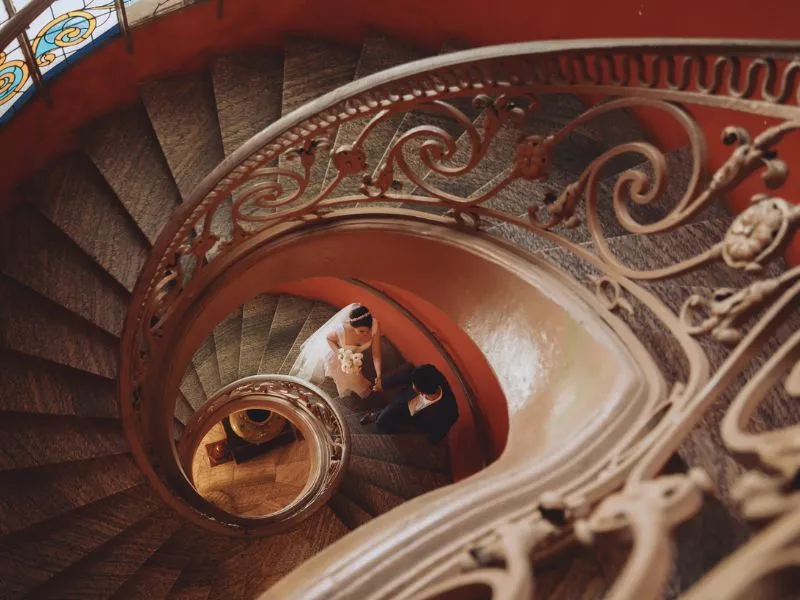
3. Over 100 Years of Historical Imprints of the Ho Chi Minh City Museum of Fine Arts
Few people know that before becoming an art museum, this magnificent building was the mansion of the Chu Hoa family, one of the richest people in Saigon in the early 20th century. The Hua family, also known as Chu Hoa, was a Chinese-born businessman with a great influence on the development of old Saigon.
Mr. Chu Hoa was not only famous for his wealth but also known for his great contributions to the community. His family owned many villas and important civil works such as hospitals, schools, and pagodas, contributing to the construction and development of the city. Some of the works built by the Chu Hoa family still exist today, becoming valuable heritages of Saigon, including the Ho Chi Minh City Museum of Fine Arts, Majestic Hotel, Tu Du Hospital, Saigon General Hospital, Ky Vien Pagoda, Phung Son Pagoda, etc.
The mansion was built by the Chu Hoa family in 1929 in the Baroque style, designed by architect Rivera and completed in 1934. After 1975, the Chu Hoa family left Vietnam and the building was taken over by the army.
In 1987, the building was transferred to establish the Ho Chi Minh City Museum of Fine Arts. In 1992, the museum officially opened to visitors. In 2012, the Ho Chi Minh City Museum of Fine Arts was recognized as a city-level architectural and artistic monument, affirming the great historical and cultural value of this building.
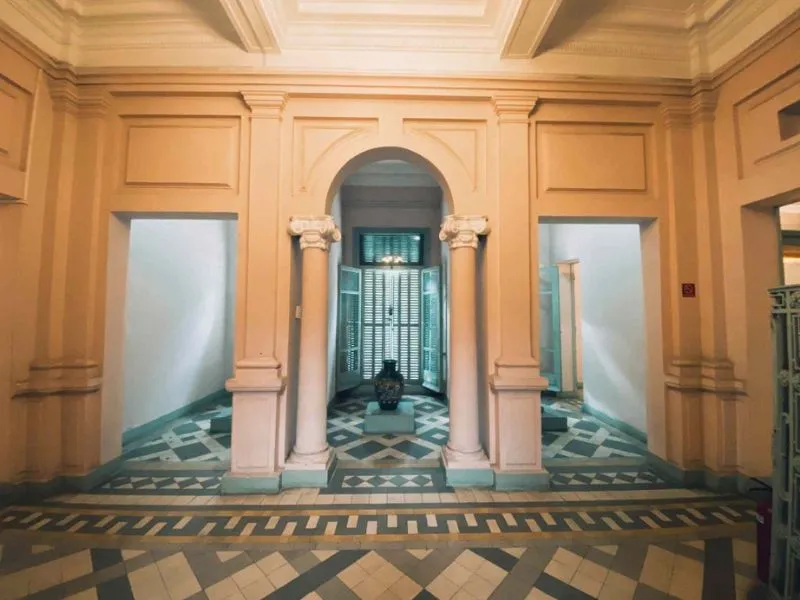
4. Detailed Travel Experience at the Ho Chi Minh City Museum of Fine Arts from A to Z
To have a complete and meaningful visit to the Ho Chi Minh City Museum of Fine Arts, please refer to the following useful experiences:
4.1. Directions and Means of Transportation
The Ho Chi Minh City Museum of Fine Arts is located in the central District 1, with convenient transportation. You can easily get to the museum by many different means:
- Motorbike, private car: You can follow Nguyen Van Troi, Nam Ky Khoi Nghia streets, then turn into Ly Tu Trong street and find Pho Duc Chinh street to get to the museum. The museum has a parking area for visitors.
- Bus: Bus routes No. 01, 02, 19, 34, 36, 38, 44, 93, 102 all have stops near the museum. You can choose a bus route that suits your itinerary.
- Taxi, ride-hailing service: This is a fast and convenient means of transportation, especially if you are traveling in a group or with young children.
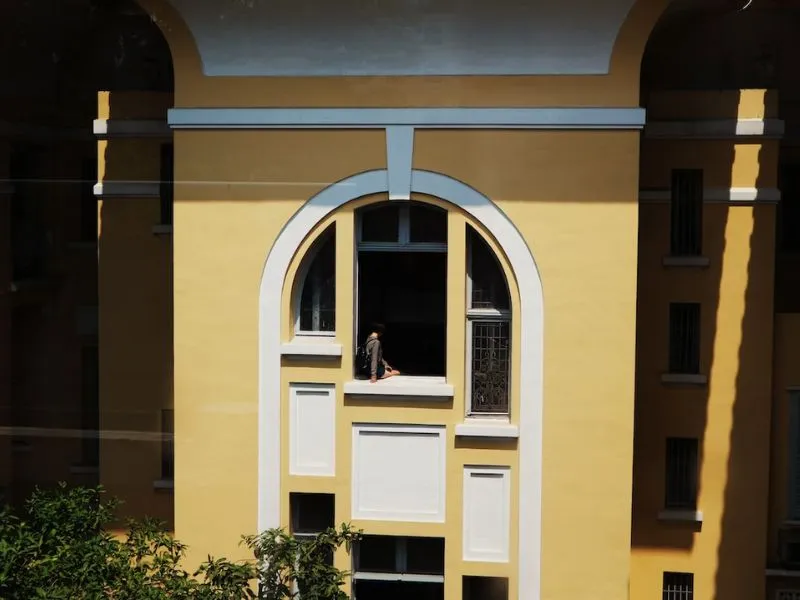
4.2. Explore the Unique Art Exhibition Areas
The Ho Chi Minh City Museum of Fine Arts currently displays and preserves more than 21,000 artworks of various genres and materials, from painting, sculpture, graphics to applied arts. To help you easily discover all the beauty of the museum, “Du lịch khắp thế gian” will share information about 3 main exhibition areas:
- Building 1 (97A Pho Duc Chinh): This is the main building, where valuable art collections of the museum are displayed. Here, you will admire modern fine art works, including the famous War Resistance Sketch collection, works by artists of the Indochina and Gia Dinh schools, and typical works by talented artists such as Nguyen Gia Tri, Diep Minh Chau, Nguyen Sang, Quach Phong… This building focuses on introducing the unique fine arts of Ho Chi Minh City and the Southern region.
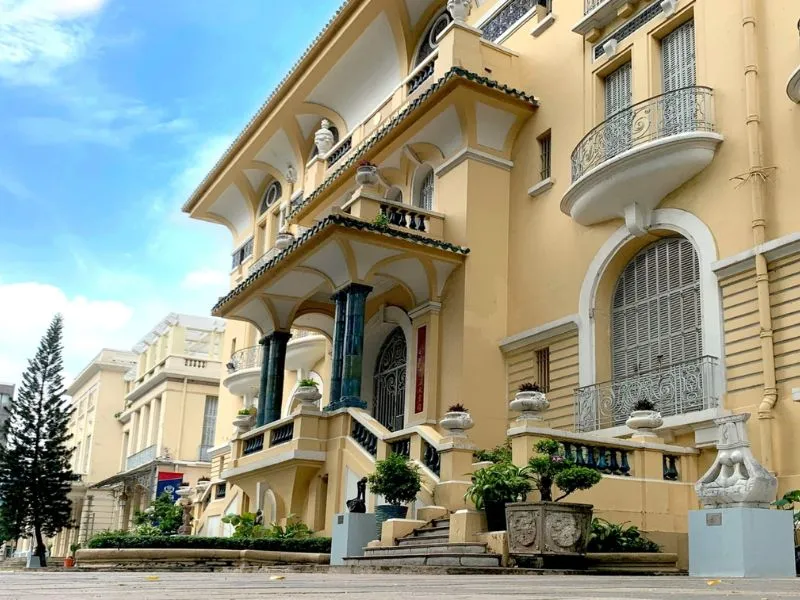
- Building 2 (106 Nguyen Thai Binh): This building is a space for periodic art and fine art exhibitions. Every year, the museum organizes 10 to 25 large-scale exhibitions, introducing works by Vietnamese and international artists from ASEAN countries, Russia, Japan, China, Italy, and many other countries. This is a great opportunity for you to update on new art trends and discover the diversity of contemporary art.
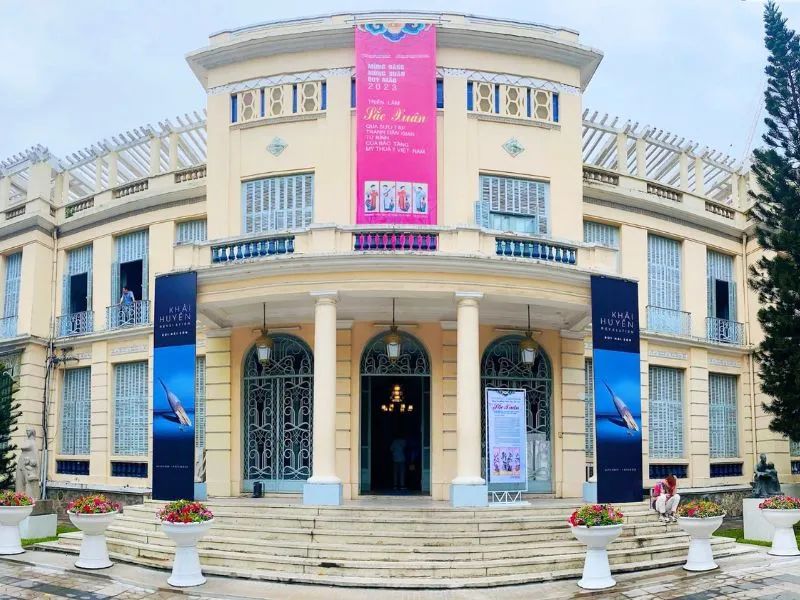
- Building 3 (97 Nguyen Du): In this building, you will explore the display space of ancient and semi-modern Vietnamese fine arts. In particular, this area also displays artworks made from unique materials such as ceramics, wood, and stone, dating from ancient cultures such as Oc Eo, Champa… This is an ideal place for you to learn about the history of Vietnamese fine arts and admire the beauty of cultural heritages.
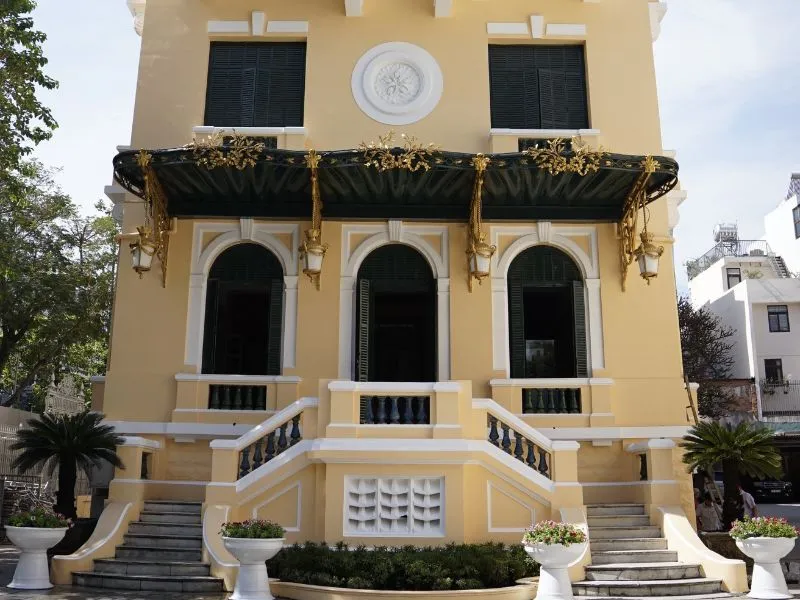
4.3. Notes on Museum Visiting Regulations
To ensure your visit goes smoothly and does not affect the common space of the museum, you need to pay attention to some of the following regulations:
- Dress code: Choose polite and discreet attire when visiting the museum.
- Parking: Park your vehicle in the designated area to avoid obstructing traffic.
- Tour guide: If you want to learn more about the artworks, please contact the museum staff for tour guide support.
- Security: Do not bring flammables, explosives, toxic substances, or weapons into the museum.
- Luggage: Send luggage, backpacks, and bags to the cloakroom as prescribed. Remember to keep your money and valuables safe.
- Hygiene and landscape: Maintain general hygiene, do not smoke, do not make noise, do not sit on railings or window frames.
- Exhibited works: Do not touch the exhibits.
- Eating and drinking: Do not bring food and drinks into the exhibition area.
- Photography and filming: Ask museum staff about regulations and fees for photography and filming in the exhibition area.
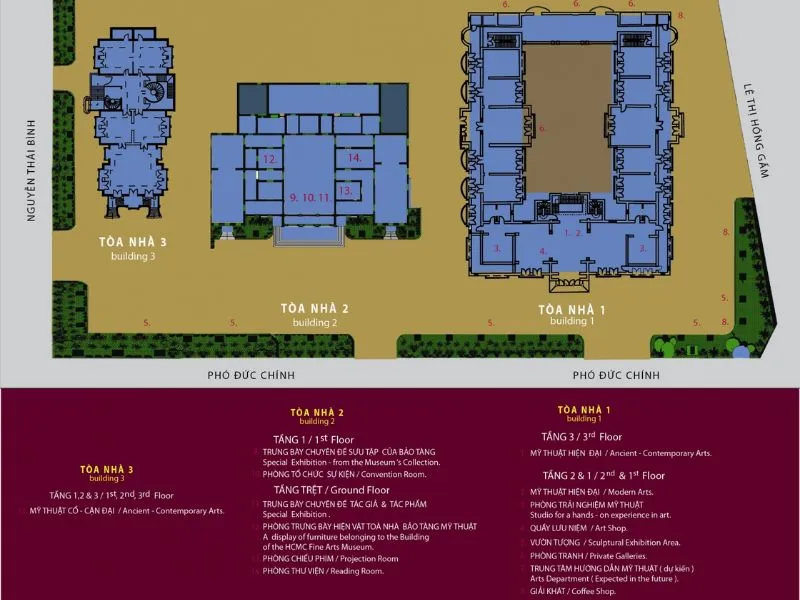
5. “Hunt” for Beautiful and Unique Photos at the Ho Chi Minh City Museum of Fine Arts
The Ho Chi Minh City Museum of Fine Arts is not only a place to enjoy art but also a “virtual living paradise” loved by Saigon youth. With its classical and unique architecture, the museum has countless beautiful and impressive photo angles. Here are some suggestions for you to have “million-like” photos at the museum:
- Museum entrance: Right from the entrance, you can capture beautiful frames with classical French architecture.
- Spiral staircase: The spiral staircase is the symbol of the museum, a perfect background for artistic photos.
- Corridor: The corridor with colored glass windows, natural light shining in creates a shimmering and magical space.
- Window frames: Window frames with sophisticated patterns are unique highlights, bringing classical beauty to photos.
- Veranda: The veranda with red tile roof and yellow walls is a photo angle imbued with French architectural style.
- Exhibition area: You can take photos with artworks, creating unique and artistic photos (remember to comply with the museum’s photography regulations).
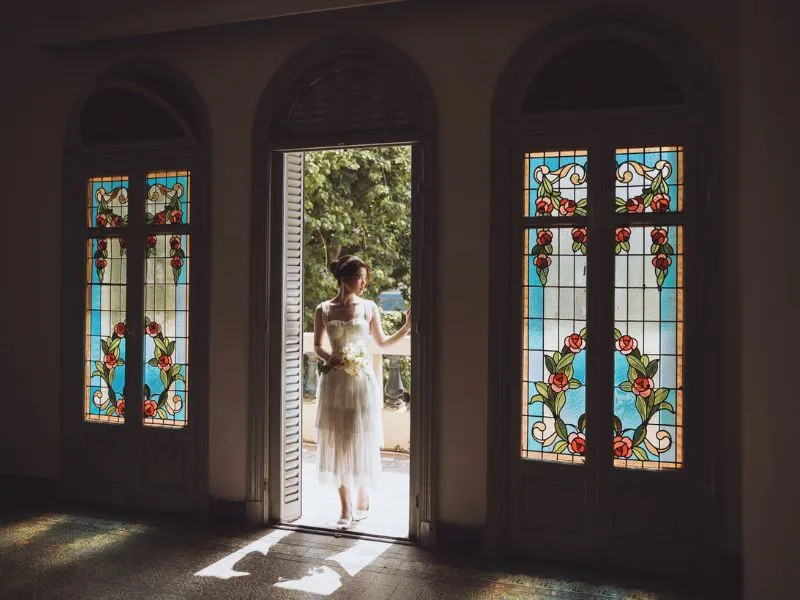



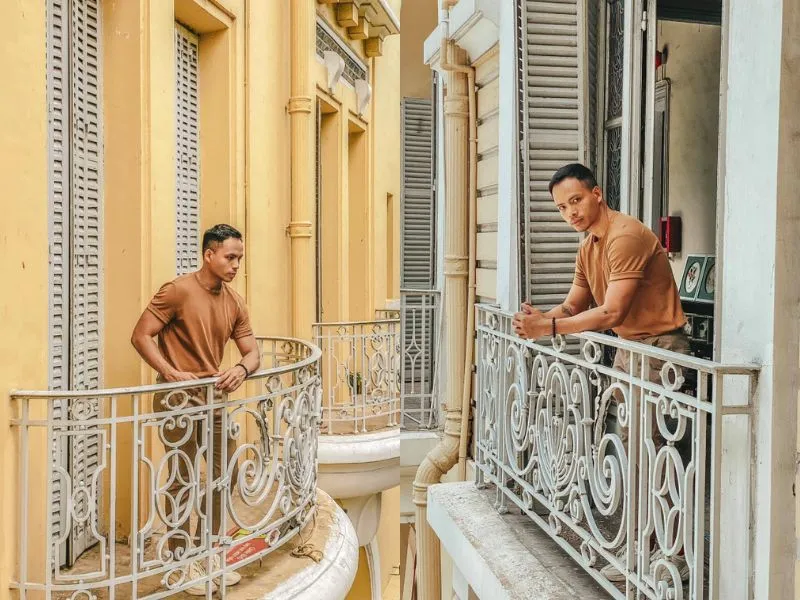
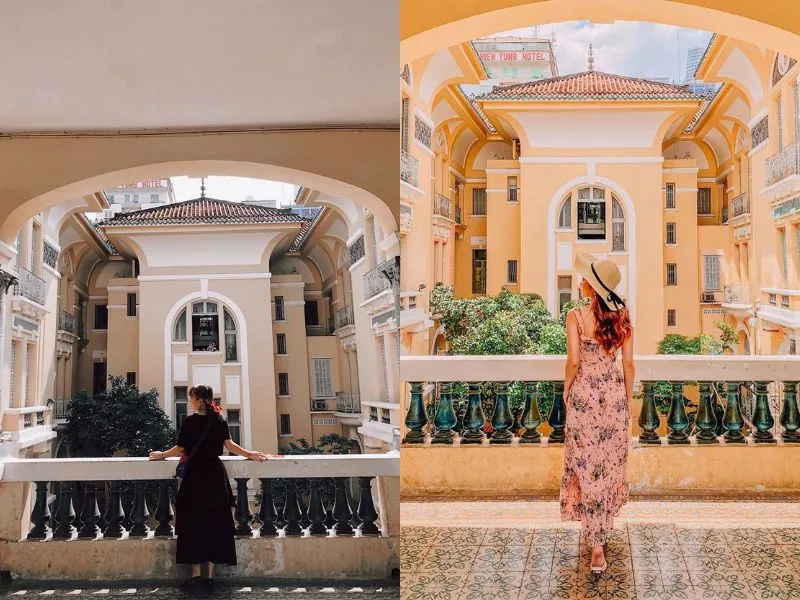


Conclusion
Visiting the Ho Chi Minh City Museum of Fine Arts is not only a journey to discover unique architectural beauty but also an opportunity for you to immerse yourself in a special art space, learn about the history and culture of Saigon. With its great cultural and artistic values, the Ho Chi Minh City Museum of Fine Arts deserves to be an unmissable destination in your Saigon discovery journey. Come and feel the timeless beauty of the museum, you will surely have memorable experiences and beautiful “virtual living” photos.